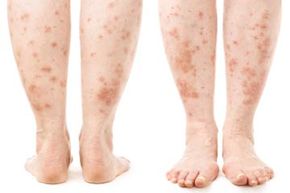Somehow, an itchy, red rash has appeared on your skin and you're racking your brain to figure out how it got there. As you ponder your pruritic predicament, the rash seems to be getting larger. Is your imagination getting the best of you, or could it be something serious?
In general, a rash is defined as a change in your skin's color or texture that is different from normal [source: WebMD]. When you spot a rash, you probably wonder where it came from. Although your skin does have natural defenses, things like viruses, fungi and parasites can breach those defenses and cause you to break out in a rash. Other common causes of rashes include reactions to certain medications and exposure to heat [source: Mayo Clinic].
Advertisement
A number of factors can influence where and how you get a rash. Your age can be a factor, as aging skin is particularly prone to certain skin rashes, such as shingles, while small children are prone to rashes from chicken pox and roseola [sources: National Institute on Aging, New Zealand Dermatological Society]. Similarly, your lifestyle can be a factor. For example, athletes tend to get hot and sweaty, which makes them more prone to conditions like heat rash [source: Mayo Clinic].
Some rashes will go away on their own -- poison ivy, for example, should go away within one to three weeks [source: Mayo Clinic]. Meanwhile, others can be serious and need the attention of a doctor. How do you know if a rash needs medical attention? If you can't identify the rash or its cause, if you have a fever, if the rash is painful or it just won't go away, then you should visit a physician.
If you've examined your rash and you want to gather some more intel before heading off to the doctor, read on to find out about the different types of rashes.
Advertisement

